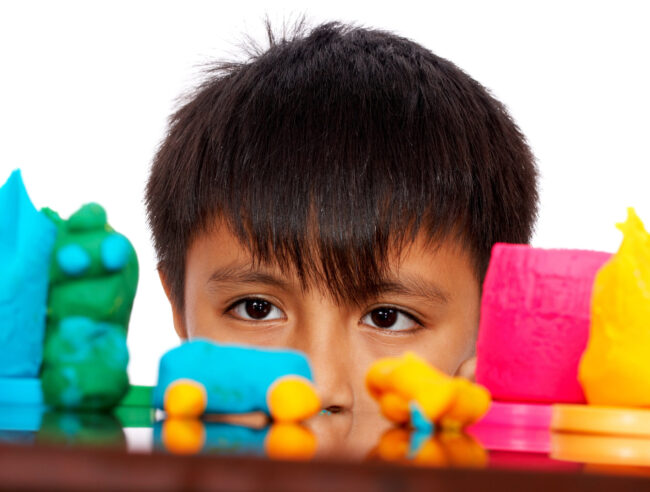Families are often struck by the variety of different approaches for early childhood centers or schools in their area. When looking for a program, it is important to understand the terms that programs use to describe their approach to educating and caring for young children. These approaches can be found in both public and private schools and programs. This Q&A will provide families with introductory explanations of some common approaches to early childhood education in the United States.
What is the Project Approach?
A project is an in-depth investigation of a topic undertaken by a class, a group of children, or an individual child in an early childhood classroom or at home. The Project Approach is incorporated into the curriculum but does not always make up the entire curriculum or the entire classroom day.
Learn more about the Project Approach from Illinois Early Learning
What is Reggio Emilia-inspired preschool?
The Reggio Emilia approach is based on the principles of respect, responsibility, and community through exploration, discovery, and play. At the core of Reggio Emilia is the belief that children form their personality during the early years and that they have “a hundred languages” through which they can express their ideas. The aim of the Reggio approach is to teach children how to use these languages (e.g., painting, sculpting, drama) in everyday life.
Learn more about the The Reggio Emilia Approach from Reggio Children
What is Montessori education?
Montessori is a multiage approach to education characterized by individualized learning, hands-on Montessori materials, child-directed activity, and uninterrupted work periods of 2–3 hours. Many Montessori early childhood classrooms have age spans of 3-6, including kindergarteners. Goals include having young children develop order, coordination, concentration, and independence.
Learn more with An Introduction to Montessori Education podcast by Illinois Early Learning
What is Waldorf education?
Waldorf early childhood education is an approach for 3-6 year olds that focuses on the arts, nature, and the imagination. Storytelling, puppetry, fairy tales, handwork, and seasonal festivals are core components of the Waldorf approach. The cultivation of children’s imagination and creativity in ways that serve their developmental needs is a strong focus.
Learn more with What is Waldorf Early Childhood Education? by WECAN
What is forest kindergarten?
Forest kindergarten, also known as nature preschool, forest school, and outdoor nursery, is a type of preschool for children age 3–6 that is held outdoors. Whatever the weather, children play, explore, and learn in a forest environment with natural materials rather than commercial toys. In forest kindergarten, the adult promotes child development goals as well as the child’s appreciation of nature and the environment.
Learn more with Flow Learning in a Forest Kindergarten by Natural Start Alliance
What about mixed approaches?
Some early childhood programs mix or blend two or more approaches. They might describe themselves, for example, as a “Reggio-inspired nature-based preschool.” Using more than one approach usually means that an early childhood school leader has selected elements from each approach to include in their program. In these mixed-approach programs, as with all early childhood programs, it is important for families to reach out and visit the program and ask the teacher or director questions to learn more about how they use the approach(es) in a typical day. After a visit and conversation, families typically have a better feel whether the program would match well with their family and their child.
IEL Resources
Web Resources
-
Flow Learning in a Forest Kindergarten
Source: Natural Start Alliance
This article describes how the forest kindergarten early childhood education model keeps children excited about learning by building on their own discoveries and interests and increases their connection with the natural world.
-
A Series: “What to Look For” in Ideal Learning Head Start Classrooms
The “WHAT TO LOOK FOR” series, authored by the Ideal Learning Head Start Network members, outlines the core elements and practices of ideal learning principles in Head Start, fostering a comprehensive and accessible understanding that supports the evolving landscape of early childhood education including settings such as Reggio-inspired, Montessori, Waldorf, Tools of the Mind, and HighScope.
-
The Reggio Emilia Approach
Source: Reggio Children
The Reggio Emilia Approach is an educational philosophy based on the image of a child with strong potentialities for development and a subject with rights, who learns through the hundred languages belonging to all human beings, and grows in relations with others.
-
Waldorf Early Childhood Association of North America (WECAN)
Source: Waldorf Early Childhood Association of North America
The Waldorf Early Childhood Association of North America (WECAN) was founded in 1983, originally under the name of the Waldorf Kindergarten Association of North America. The administrative office is in Spring Valley, New York. WECAN works very closely in collaboration with its sister organization, the Association of Waldorf Schools of North America (AWSNA). WECAN is also a Full Member Association in the International Association for Steiner/ Waldorf Early Childhood Education (IASWECE), based in Järna, Sweden. WECAN’s mission is to foster a new cultural impulse for the work with the young child from pre-birth to age seven. Based on an anthroposophical understanding of human development, WECAN is committed to protecting and nurturing childhood as a foundation for renewing human culture.
-
What is Waldorf Early Childhood Education
Source: Waldorf Early Childhood Association of North America
This article describes the essential elements of Waldorf early childhood education.


